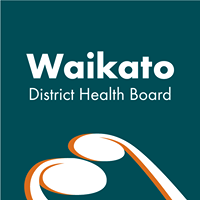THE BEST PLACE to give birth to your baby is close to home, say Waikato’s top midwives.
Now Thames-Coromandel area women will have a new, modern birthing unit right on their doorstep.
The new Thames Birthing Unit, which officially opens on Monday (5 September) will allow women in the Thames, Coromandel and Hauraki region to receive excellent maternity care in a welcoming, holistic new facility.
Corli Roodt, clinical midwife director for the Waikato DHB hopes local women and midwives embrace the facility.
“The new unit provides midwives a purpose-built environment within which to provide high quality maternity care to women and their babies of the Thames-Coromandel-Hauraki District,” says Roodt.
Waikato DHB is keen to encourage women with low-risk pregnancies to choose to birth in their communities, where they are close to home and families.
The Waikato DHB has primary birthing units across the region, including Thames, Morrinsville, Te Awamutu, Te Kuiti, Tokoroa and Taumarunui.
Waikato DHB’s other birthing units, Rhoda Read in Morrinsville and Matariki in Te Awamutu provide rural women with antenatal care, primary birthing services and postnatal support.
With friendly staff, Morrinsville and Te Awamutu-area women can choose to birth in an environment that is close to home and near family.
Situated on mature, landscaped grounds, these rural birthing units provide a restful environment for new mothers.
Women who plan to have their babies in a birthing centre rather than a hospital environment are more likely to have a natural birth, without medical intervention, says Roodt.
Recent New Zealand research analysed 16,000 low-risk women and found that 95 per cent of those who planned to have their babies in a birthing centre or at home were able to have a normal vaginal birth, without medical intervention such as an emergency caesarean section.
However, only 73 per cent of those low-risk women who planned to birth in a tertiary hospital had a normal birth.
“We want low-risk women to birth near their home, where their family and whanau support systems are,” says Roodt.
Midwives in rural areas work to a different time-line says Roodt, and women birthing there are in safe hands, with backup from Waikato Hospital when required. “When care is provided to a woman in a rural setting, decision-making time-lines depend on the distance to the base hospital,” says Roodt. “Rural practitioners will transfer women earlier to a base hospital when risk factors arise than their urban colleagues.”
Waikato DHB director of nursing and midwifery Sue Hayward says rural women should be encouraged to use their local primary birthing facilities if they have a low-risk pregnancy.
“Waikato Hospital is a secondary/tertiary hospital providing high-tech services to women and their babies who present with risk factors,” says Hayward. “Whilst interventions in maternity care have a place, low-risk women should think twice before choosing a secondary/tertiary hospital as place of birth.”
For the 2010 calendar year there were 108 births in Thames, 114 at Matariki, 91 at Rhoda Read and 4080 across Waikato DHB facilities as a whole (not including the 1800 or so babies born at independent birthing facilities in the region last year).
“If the primary facilities, especially those in the rural areas, are not used these communities run the risk of not having their local facility in the future,” says Hayward.
“In New Zealand the birth numbers in primary units are declining, in part due to women choosing to birth in secondary/tertiary hospitals. It is in everyone’s interest to keep birth as normal as possible due to the impact of escalating costs of intervention on the public health budget.”
A Sense Of Community
MIDWIVES in the Thames-Coromandel area are looking forward to the new Thames Birthing Unit opening, none more than its charge midwife manager Louise Rowden http://www.youtubecom/watch?v=uWNWifGE670.
“I think everyone is really excited,” says Rowden, who has kept a keen eye on the building’s progress. “It’s looking beautiful, and everyone is looking forward to it.”
Rowden has been a midwife for nine years, gaining her Bachelor of Health Science (Midwifery) from Auckland University of Technology (AUT) in 2002. The 45-year-old mother-of-four is also a trained lactation consultant.
Before becoming a midwife Rowden worked as a naturopath, dealing mainly with infertility issues. She has more than 18 years experience in naturopathy.
Rowden moved to Thames from Piha six years ago, and enjoys working at Thames Hospital.
“I like the sense of community here,” says Rowden.
She says women can feel confident in their health and safety at the birthing unit.
She heads up the professional, committed team which includes 10 staff midwives, and two nurses. Staff are highly skilled and keep up-to-date with training.
Thames is a primary birthing unit, which means the focus is on low-risk mothers and babies.
Rowden enjoys working with new mums. “(Childbirth) is a lovely time to be involved in women’s lives,” she says. “The best thing is when you know you’ve helped someone have this wonderful, natural birth that they’ve always wanted.”
She believes that the unit’s holistic focus, and the availability of equipment such as birthing slings, birthing balls, massage and aromatherapy oils, and the birthing pool, will enhance the experience for women. “There is a lot of research showing that a low-stress environment helps women have a more natural and normal birth,” says Rowden.
In 2010 there were 108
births in Thames, a small percentage of the 4080 babies born
in Waikato DHB facilities last year.
For midwives like
Rowden, the relatively lower number of births in Thames adds
to the charm of rural midwifery.
“Because it’s small we’ve got the time to spend with people,” says Rowden. “It’s more relaxed here and not as busy and we try to spend time with women to help them with breastfeeding and bond with their babies, to get things right before they go home.”
She enjoys educating new mums, and sharing her knowledge. “It’s important to prepare them for the months to come.”
In her free time Rowden enjoys the outdoors, including bush walking and gardening.
Together with fellow Thames midwife Tina Briggs she recently completed her first off-road endurance event, the Tough Guy and Girl Challenge in Rotorua.
ENDS



 FASD-CAN: People With Fetal Alcohol Spectrum Disorder (FASD) Dismayed At Government’s Response To The Rights Of Disabled People
FASD-CAN: People With Fetal Alcohol Spectrum Disorder (FASD) Dismayed At Government’s Response To The Rights Of Disabled People NZ Opera: Jane Austen Opera Coming To Christchurch & Dunedin - South Island Premiere | NZ Opera’s Mansfield Park Returns This April
NZ Opera: Jane Austen Opera Coming To Christchurch & Dunedin - South Island Premiere | NZ Opera’s Mansfield Park Returns This April Sport Manawatū: Women’s Health Series Empowers Women To Prioritise Their Wellbeing
Sport Manawatū: Women’s Health Series Empowers Women To Prioritise Their Wellbeing Pure Adventure Charitable Trust: Iconic One New Zealand GODZONE To Make Triumphant Return To New Zealand’s Adventure Racing Scene
Pure Adventure Charitable Trust: Iconic One New Zealand GODZONE To Make Triumphant Return To New Zealand’s Adventure Racing Scene The Charter School Agency: New Charter Schools Open Doors To First Students
The Charter School Agency: New Charter Schools Open Doors To First Students  The Wednesday Challenge: Tauranga Travel Initiative Goes National
The Wednesday Challenge: Tauranga Travel Initiative Goes National